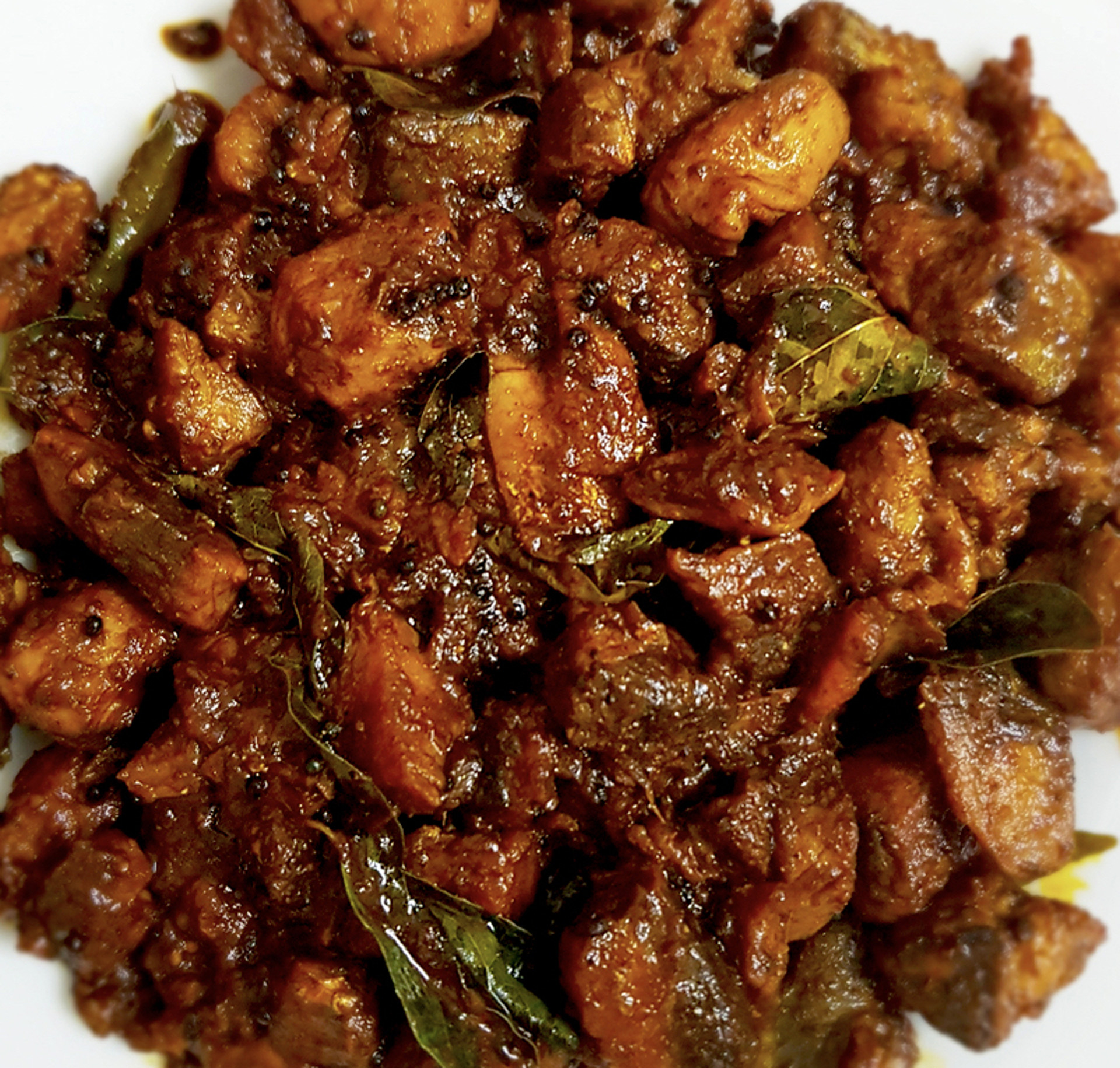Once, while on a camping trip from school, my Malayali friend offered to share her prized possession with me, so that consuming the bland porridge became easier. And to my utter amusement and bewilderment, I saw a small jar of pickle; not the regular, run-of-the-mill mango, lemon or other vegetarian pickle but a fish pickle. After the first reluctant bite, when the tamarind, the vinegar, the chillies and the salt bombarded my gustatory cells, I realized that I had tasted a tangy, spicy piece of heaven. No, it’s not an exaggeration!
The art of pickling is an old tradition in culinary history. In ancient times, when there were no refrigerators available, people devised innovative means to preserve perishable food products and avoid wastage. The method employed was to cure pieces of meat, fish and vegetables in salt and brine, thereby, increasing their longevity without compromising on the nutritional quotient. As the formula of preservation travelled across countries and civilizations, the process of pickling underwent several mutations, often adapting itself to local customs and practices. Soon, therefore, brine got replaced by oil, (at times both were in use), salt was accompanied by an assortment of other condiments and what emerged thereafter, was a plethora of pickles with distinctive flavours. Within the Indian subcontinent, there exists more than forty variety of pickles, each carrying the flavor of its region of origin.
In India, the term pickle is usually associated with its vegetarian variants, chief among them being the mango and lemon. However, pickles made of meat, poultry and fish also constitute the pickles tradition in India, creating a colourful culinary culture. From Nagaland and Assam in the north-eastern arm and Andhra Pradesh in south-eastern India to Goa in the western coast and Mangalore, Coorg and Kerala, in the south-western part, the non-vegetarian pickles form a veritable component of regional cuisine. A wide range of fish, fresh and dried, to chicken, duck, pork and the meat of lambs and boars are used to make pickles, making the tradition of Indian pickles unique and brimming with an insatiable motley of taste.
In terms of South-Indian cuisine, Pat Caplan observes that it is “usually” associated with vegetarian dishes with of course, a few meat and fish recipes. Malayali cuisine, however, stands apart in this aspect. It offers an overwhelming diversity, from vegetables to meat and fish dishes, each bearing the imprints of multiple cultures. The region of Kerala was home to a host of influences due to its proximity to the sea. Frequented by sea-farers, explorers and merchants, Chinese, Arabs, Dutch and the Portuguese, the port state became a cultural melting-pot, visible in its cuisine. Arabic recipes, Portuguese brine, Dutch curing techniques, coupled with a rich coastline, an abundance of coconut and exotic regional spices, all culminated into a gastronomical paradise.
The Malabar Coast boasts of a rich bounty of fish and crustaceans. Popular belief has it that the monsoon often rendered the seas unsuitable for fishing, thereby, making it a lean season for fishermen and consumers, alike. Drying fish, therefore, became a sought after method to avail fish during scarcity. And along with that emerged the pickling of fish to survive lean periods. What grew out of a necessity to combat fish shortage, soon morphed into a delicacy. Shrimps or chemeen to Tuna or choora, the pickles not only serve as tasty accompaniments but have the ability to add a tangy dose of excitement to an otherwise boring dish. A visit to any convenient store selling Malayali food products would confirm the popularity of the fish pickles by the number of pickle bottles on display. A sneak peak into any traveller’s bag, leaving for the “Gulf” would further reconfirm the love for the pickle.
It was the Syrian Christians who perfected the non-vegetarian pickle; from meats to fish, the pickles have become symbolic of Malayali cuisine. Today, its popularity has moved beyond regional demarcations and cartographic boundaries, satisfying taste-buds across the world. The spicy concoction of brine, oil, curry leaves and an array of spices, remains a symbol of confluence; a confluence of need, culinary innovation and cultural adaptation. To celebrate this beautiful fruition of culinary evolution, let me take you to ammachi’s kitchen and savour this spoonful of sheer bliss, the choora achaar or Tuna Pickle.

Ingredients:
- 250 gms of Tuna fish
- 5 tbsp of Sesame or Gingelly oil
- ½ cup vinegar
- 1 pod of Garlic
- 2-3” ginger
- A bunch of fresh curry leaves
- ½ tsp of black mustard seeds
- ¼ tsp of fenugreek seeds
- 5 tsp of Red Chilli Powder
- 1 ½ tsp of black pepper powder
- ¾ tsp of asofoetida powder
- A pinch of Turmeric powder
- Salt to taste
Method:
Cut Tuna into bite sized cubes and marinate it with pepper, ¾ of red chilli powder and salt. Keep aside for an hour.
Heat oil in a pan and fry the fish pieces. Remove and keep aside.
In the same oil, splutter mustard seeds, fenugreek seeds, curry leaves, ginger and garlic paste, (the paste should be course) and the asofoetida. Add the remaining red chilli powder and some salt. Stir well on medium heat, making sure that the ingredients do not burn. Once brown in colour, add the fried pieces of fish. Mix well and finally pour the vinegar. (The quantity of vinegar can be reduced depending upon the amount of pungency desired). Simmer for a few minutes and turn off the gas. Once it reaches room temperature, store it in an air-tight jar, preferably a porcelain jar. The shelf-life ranges from one to two weeks, depending upon the weather.
So, without further adieu, take out your aprons and prepare this gorgeous Malabar pickle and bite into a piece of heaven!
This article was first published in ourfrontcover.com

